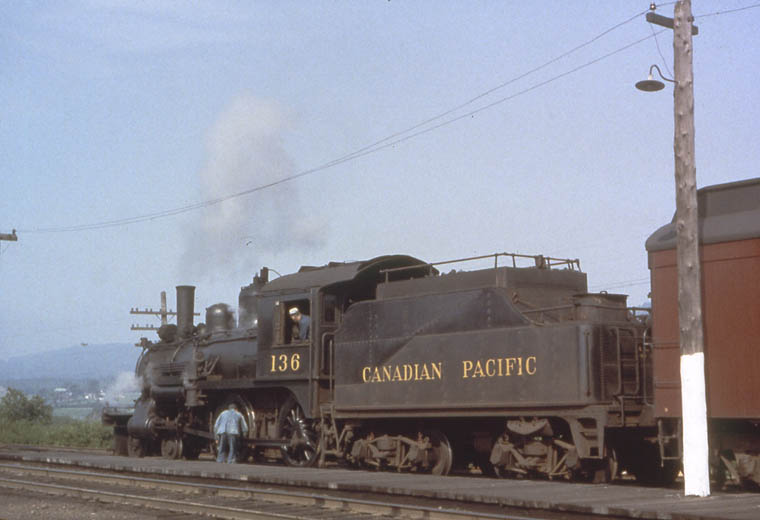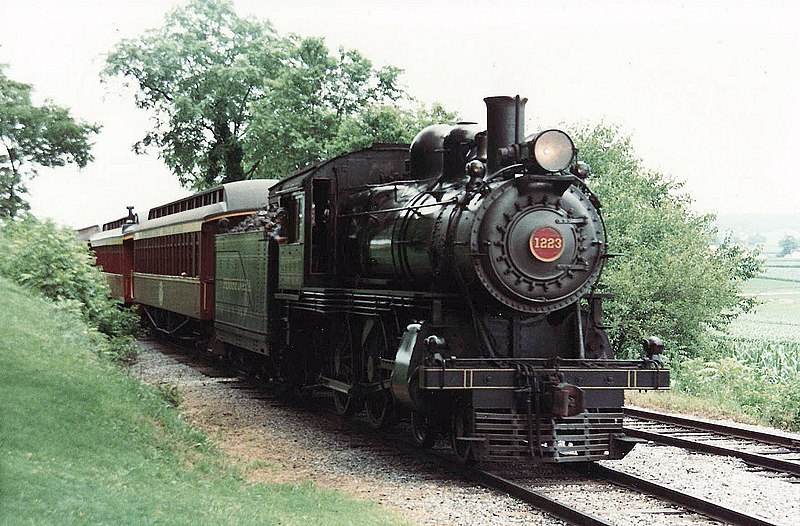Of course, any time you mention Baldwin, you have to talk about the DR-12-8-1500/2, better known as a Baldwin Centipede. This was actually Baldwin's first entrance into the diesel-electric road locomotive market, being introduced in '45. Up to this point, they had only made diesel-electric switchers. Since they had no experience in the diesel market, they fell back on their joint electric locomotive construction with Westinghouse. The result used a pair of cast-steel half-frames that were articulated in the center. Integrated into those frames were two rigid-mounted 4-axle trucks with all 4 axles powered. Attached to the outer end of the half-frames was a 2-axle unpowered floating truck, to guide it through curves. So, it had 12 axles, 8 of them powered, laid out in an electric locomotive-esque 2-D-D-2 configuration (if you made it a steam engine, it would be a 4-8-8-4, so this was the diesel equivalent of a Big Boy). For propulsion, it used two 1500hp De La Vergne Engines, for a total of 3000hp. Hence the name: Diesel Road, 12 axles total, 8 axles powered, two 1500hp engines.
This is a photo of the bare frame, to help make it clearer.


Of course, that unbroken string of wheels resulted in the nickname "Centipede". When combined with it's 593.71 ton total weight, it also resulted in massive tractive effort: 205,000 pounds starting and 105,600 pounds continuous. They also had a total length of 91 feet, making them larger than any diesel on the market at the time. The whole deal was topped with their Babyface carbody, the first application.

The first demonstrator pair would actually go out and tour on the Union Pacific, a wise choice considering UP's love for large and powerful engines. UP would not buy any though. And most railroads were likely scared off by the size and weight. Instead, the only purchasers would be Nacional de Mexico, Seaboard Air Line and Pennsylvania Railroad, for a total of 54 locomotives produced. PRR's 24, which would be the largest fleet, were semi-permanently coupled as A-A sets, resulting in a single 6000hp, 24-axle, 1200 ton locomotive that was over 180 feet in length.

They were essentially obsolete on arrival, with every other manufacturer having settled on the conventional frame over two pivoting trucks. PRR originally hoped to use theirs in long-distance high-speed passenger usage, as did SAL. But the extreme weight of the locomotives meant that they beat the daylights out of the infrastructure when run at speed, and they were not reliable enough to keep a timetable. While the huge power and tractive effort would have made them excellent an excellent drag freight hauler, they lacked dynamic brakes, so they struggled to slow trains on downgrades. They also lacked M.U. connections of the front and had Baldwin's odd air throttle, so you could only hook a pair of them back-to-back and that was it. If you needed more power, you either had to put run a second set of locomotives with a second crew, or you had to replace these on the front of the train entirely. A disgusted PRR demoted theirs to helper duty on Horseshoe Curve and shoving cuts of cars at hump yards, but since the running gear wasn't designed for pushing, they were prone to derailing. In addition, these had the issues that would become oh so typical of Baldwins. Each one was built essentially custom, so between units the wiring, air lines and fluid lines were all in different locations and layouts. Coolant leaks and oil leaks were frequent, and because Baldwin didn't run any wiring inside conduits, this resulted in a number of fires. The De La Vergne engines also required constant fiddling.

SAL and NdeM ran theirs on trains that only required a single unit, and even later configured theirs with electric throttles to play nice with other units, as well as overhauling the engines and uprating them to 3200hp a piece. While PRR's were parked in '58, they were reactivated in '60, although by that point quite worn out, and then retired for good by 1962. SAL retired their fleet in '64 and NdeM would scrap theirs in the late '60s.





























































